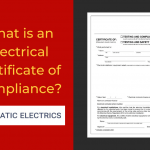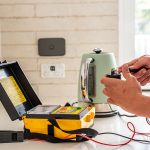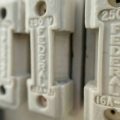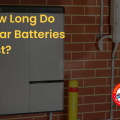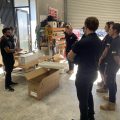If you’re a business owner residing in Queensland, then you really need to be aware of test and tag. This is a process for which you as an employer are responsible. Law states that “all employers need to take standards of ‘reasonable’ care to make sure that all employees in their care are kept safe at all times.” Within this remit of care falls the test and tag procedure. Let’s take a closer look.
What exactly is appliance testing and tagging?
In basic terms testing and tagging is a procedure that safety-checks and documents the testing of all portable electrical appliances. This can be anything from toasters and kettles found in staff break-out areas, to power tools found on construction sites and even larger portable hire equipment.
How often do items need to be tested?
The frequency for testing each item of equipment is laid down in section 2 of the AS/NZS/3760 Australian Safety and Inspection Standard. It’s based on the various types of equipment and how frequently they’re used. For example, any equipment that’s a high risk, high usage or hire equipment should be tested for safety every 3 months. Whereas equipment that isn’t deemed to be frequently used or has rigid cabling, or isn’t so open to abuse may be inspected as infrequently as every 5 years.
Who is able to perform test and tag processes in Queensland?
Under the terms of the Australian Electrical Safety and Inspection Standard, specified testing and tagging can only be carried out by a licensed electrician who holds a Restricted Electrical Contractor’s License (RECL).
How long will the process take?
The length of time taken depends on the appliance being tested. Each item needs to pass a visual safety test as well as any number of electrical test before it can be deemed fit. Therefore as an example: if the item tested is a kettle, then it should only take around a couple of minutes to complete. Conversely, if it’s a large portable hire item then chances are it will take considerably longer.
What happens when items fail?
In rough terms, only around 5% of all items tested are deemed electrically unsafe. If an item has failed testing then a red danger tag will be placed against the item. When this happens they must be withdrawn from service until they are either repaired or replaced. If a repair is carried out, the item will need to be safety tested again and only then will it be allowed back in service.
Do I need to keep proof of testing?
Once you enter a schedule of tests and tags, you’ll be given certificates of compliance for each item. These need to be kept and presented should an OH &S inspector turn up
Testing and tagging are highly important not only for the well-being of your employees but for your business as a whole and failure to adhere to testing laws could cost you in more ways than you think.
If you’re in charge of any items that don’t hold a Certificate of Compliance then give our electrical technician a call on07 3497 5076 to arrange for us to test and tag your items.




